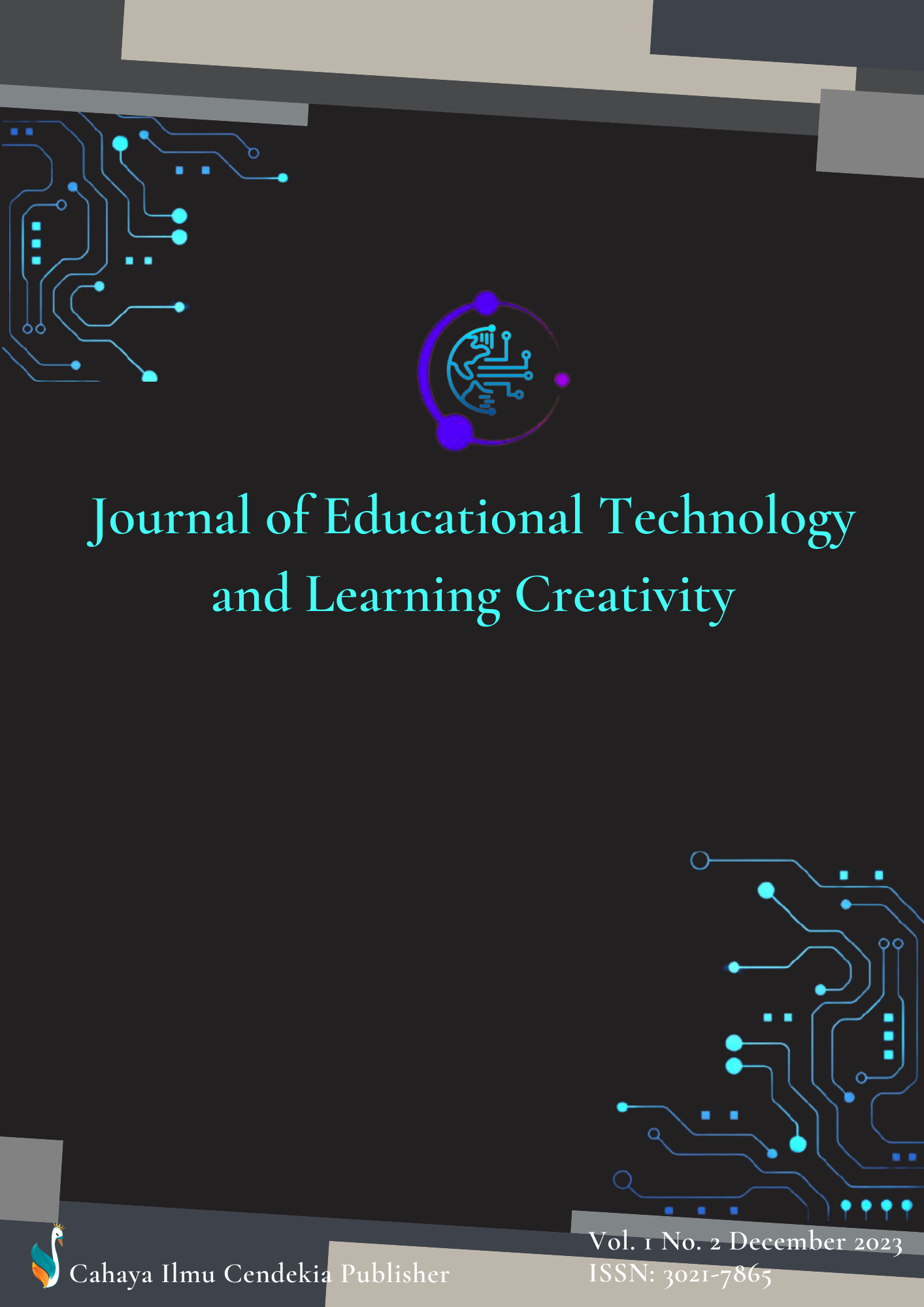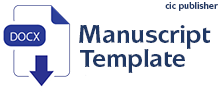Development of a Simple Stirling Engine Demonstration Tool on the Subject of Thermodynamics
Abstract
Purpose of the study: The aim of this research is to develop a simple Stirling engine teaching aid for the class XI thermodynamics subject at high school and determine students' responses to the teaching aid developed.
Methodology: The research method used is research and development (R&D) ADDIE model, namely with the stages of analysis, design, development, implementation, evaluation. The instruments used in this research were media expert validation questionnaires, material expert validation, small group trials and field trials with a Likert scale. The data obtained was then analyzed quantitatively and qualitatively. The test subjects in this research were carried out using small group trials of 10 students and field trials of 30 students from three schools.
Main Findings: Based on the results of the material expert validation analysis and media expert validation, an average of 86.5% was obtained which could be categorized as very good, then for small group trials it was obtained 91.9% and 93.1% of field trials could be categorized as very good, so that the media for simple Stirling engine teaching aids were has been developed as a whole very well to be used as a teaching aid in learning in class XI High School.
Novelty/Originality of this study: The novelty of developing a simple Stirling engine demonstration tool for the study of thermodynamics lies in its innovative approach to making a complex subject accessible, engaging, and applicable to a wide range of learners, thereby fostering a deeper understanding and appreciation of the field.
References
H. J. Suriadi, F. Firman, and R. Ahmad, “Analisis Problema Pembelajaran Daring Terhadap Pendidikan Karakter Peserta Didik,” Edukatif J. Ilmu Pendidik., vol. 3, no. 1, pp. 165–173, 2021, doi: 10.31004/edukatif.v3i1.251.
S. Nurhidayati, “Pengintegrasian Potensi Lokal Pada Mata Kuliah Pendidikan Karakter Untuk Meningkatkan Hasil Belajar Dan Rasa Hormat Mahasiswa Terhadap Lingkungan,” JUPE J. Pendidik. Mandala, vol. 4, no. 4, pp. 0–5, 2019, doi: 10.36312/jupe.v4i4.995.
S. F. N. Fitri, “Problematika Kualitas Pendidikan di Indonesia,” J. Pendidik. Tambusai, vol. 5, no. 1, pp. 1617–1620, 2021.
Z. Hasanah and Ahmad Shofiyul Himami, “Model Pembelajaran Kooperatif Dalam Menumbuhkan Keaktifan Belajar Siswa,” IRSYADUNA J. Stud. Kemahasiswaan, vol. 1, no. 1, pp. 1–13, 2021.
Bob Widodi, Darmaji, and Astalini, “Identifikasi Keterampilan Proses Sains Dan Kemampuan Berpikir Kreatif Siswa,” J. Pendidik. dan Pembelajaran IPA Indones., vol. 13, no. 1, pp. 1–8, 2023, doi: 10.23887/jppii.v13i1.57131.
Y. Yulisa, L. Hakim, and L. Lia, “Pengaruh Video Pembelajaran Fisika Terhadap Pemahaman Konsep Siswa Smp,” J. Lumin. Ris. Ilm. Pendidik. Fis., vol. 1, no. 1, p. 37, 2020, doi: 10.31851/luminous.v1i1.3445.
W. T. Wulandari, “Contextual Learning Approach : Development of Worksheet in Physics Subjects,” Schrödinger J. Phys. Educ., vol. 4, no. 2, 2023, doi: 10.37251/sjpe.v4i2.506.
A. T. Sari, S. Bektiarso, and Yushardi, “Penerapan Model Pembelajaran Generatif Dengan Metode Demonstrasi Dalam Pembelajaran Fisika Di SMP,” J. Pembelajaran Fis., vol. 1, no. 2, p. 145, 2012.
I. Sriwahyuni, E. Risdianto, and H. Johan, “Pengembangan Bahan Ajar Elektronik Menggunakan Flip Pdf Professional Pada Materi Alat-Alat Optik Di Sma,” J. Kumparan Fis., vol. 2, no. 3, pp. 145–152, 2019, doi: 10.33369/jkf.2.3.145-152.
Sulistiyono, “Pengembangan Modul Pembelajaran Fisika Berbasis Scientific Investigation untuk Meningkatkan Kemandirian Belajar dan Penguasaan Materi Siswa SMA,” JagoMIPA J. Pendidik. Matemaika dan IPA, vol. 2, no. 1, pp. 33–41, 2022.
A. Permata and Y. B. Bhakti, “Keefektifan Virtual Class dengan Google Classroom dalam Pembelajaran Fisika Dimasa Pandemi Covid-19,” JIPFRI (Jurnal Inov. Pendidik. Fis. dan Ris. Ilmiah), vol. 4, no. 1, pp. 27–33, 2020, doi: 10.30599/jipfri.v4i1.669.
M. Masyruhan, U. Pratiwi, and Y. Al Hakim, “Perancangan Alat Peraga Hukum Hooke Berbasis Mikrokontroler Arduino Sebagai Media Pembelajaran Fisika,” SPEKTRA J. Kaji. Pendidik. Sains, vol. 6, no. 2, p. 134, 2020, doi: 10.32699/spektra.v6i2.145.
Y. K. Daniar Wahyuningtyas1, Suryo Widodo2 and 1, “Analisis Tingkat Kognitif Kompetensi Dasar Kurikulum 2013 Mata Pelajaran Matematika Wajib Kelas X SMA/MA Berdasarkan Taksonomi Bloom,” vol. 06, no. 01, pp. 1–23, 2022.
I. Magdalena, R. O. Prabandani, E. S. Rini, M. A. Fitriani, and A. A. Putri, “Analisis Pengembangan Bahan Ajar,” J. Pendidik. dan Ilmu Sos., vol. 2, no. 2, pp. 170–187, 2020.
S. Suprihatin and Y. M. Manik, “Guru Menginovasi Bahan Ajar Sebagai Langkah Untuk Meningkatkan Hasil Belajar Siswa,” PROMOSI (Jurnal Pendidik. Ekon., vol. 8, no. 1, pp. 65–72, 2020, doi: 10.24127/pro.v8i1.2868.
F. P. Sinaga, Jurhana, Yusrita, and M. Hidayat, “Analisis Penggunaan Metode Mengajar (Metode Demonstrasi, Metode Eksperimen, Metode Inquiry, Dan Metode Discovery Di SMA Negeri 11 Kota Jambi),” Relativ. J. Ris. Inov. Pembelajaran Fis., vol. 5, no. 2, pp. 103–110, 2022, doi: https://doi.org/10.29103/relativitas.v5i2.7830.
R. Religia and H. R. Achmadi, “Pengembangan KIT Sederhana Stirling Engine pada Materi Termodinamika sebagai Media Pembelajaran Fisika SMA,” J. Inov. Pendidik. Fis., vol. 06, no. 03, pp. 113–119, 2017.
D. S. Andayani, S. Ayub, J. Ardhuha, and Susilawati, “Pengembangan Mesin Stirling Tipe Gamma Sederhana Sebagai Alat Praktikum Termodinamika Kelas XI,” J. Ilm. Profesi Pendidik., vol. 8, no. 1b, 2023.
D. N. Sari, J. Handhika, and E. Kurniadi, “Pengembangan Alat Peraga Mesin Stirling Dalam Meningkatkan Pemahaman Konsep Hukum Termodinamika Ii Pada Siswa Kelas XI SMA,” In Seminar Nasional Pendidikan FisikA VI 2020, 2020, pp. 1–5.
Copyright (c) 2023 Yeyen Helida, Chin Peng Ching, Adekunle Oyewo

This work is licensed under a Creative Commons Attribution-NonCommercial 4.0 International License.
Authors who publish with this journal agree to the following terms:
- Authors retain copyright and acknowledge that the Journal of Educational Technology and Learning Creativity is the first publisher licensed under a Creative Commons Attribution 4.0 International License.
- Authors are able to enter into separate, additional contractual arrangements for the non-exclusive distribution of the journal's published version of the work (e.g., post it to an institutional repository or publish it in a book), with an acknowledgment of its initial publication in this journal.
- Authors are permitted and encouraged to post their work online (e.g., in institutional repositories or on their website) prior to and during the submission process, as it can lead to productive exchanges and earlier and greater citation of published work.


.png)


.png)
.png)
.png)












